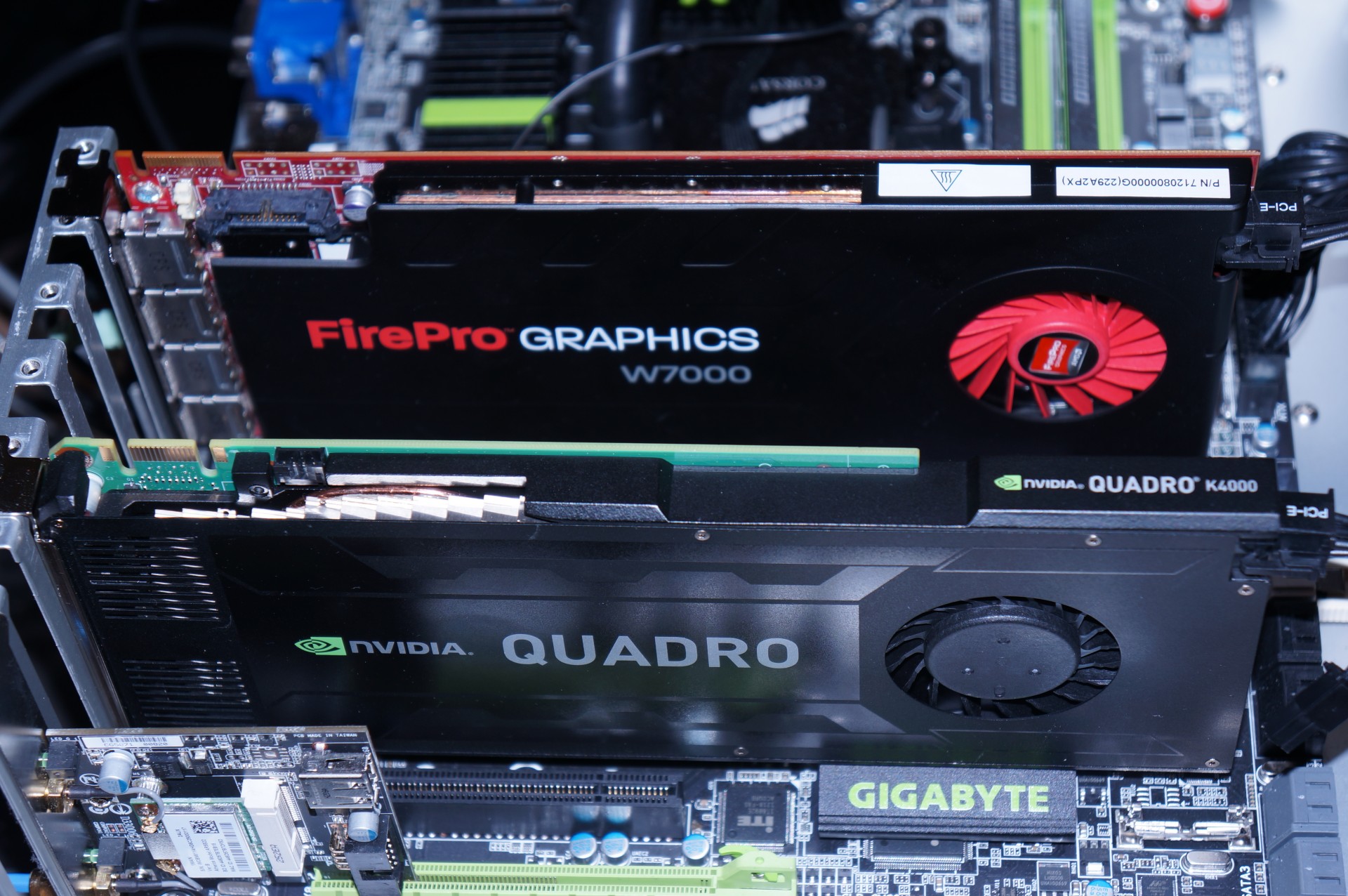Workstation Graphics: 14 FirePro And Quadro Cards
We put 14 professional and seven gaming graphics cards from two generations through a number of workstation, general-purpose computing, and synthetic applications. By the end of our nearly 70 charts, you should know which board is right for your workload.
Nvidia's Quadro K4000 And AMD's FirePro W7000 Get Recommendations
Conclusion
Even though the results differ massively from one benchmark to the next for both AMD and Nvidia graphics cards, there’s somewhat of a common thread. We'll cover our first impressions for each company separately, and then reveal the two cards we liked best.
Nvidia: Steady Performance or Slightly Improved, Efficiency Much Better
You have to give it to Nvidia: the company is squeezing a lot of performance out of its GPU hardware. Comparing the Quadro K5000 to the Quadro 5000 and the Quadro K4000 to the Quadro 4000 are two good examples. The K5000 even comes close to the Quadro 6000's performance on occasion, while using a little more than half as much power in the process.
However, the Quadro K5000 and K4000 share some of the limitations of Nvidia’s gaming graphics cards based on GK104. Simply, that GPU wasn't designed for compute. Nvidia’s drivers are still top-notch, and its cards are going to be your first choice in an application the company is optimizing for.
AMD: Performance Vastly Improved, Efficiency Steady or Slightly Improved
AMD deserves respect for its GCN-based FirePro cards. They offer vastly better performance than their predecessors. AMD caught up in many areas where it previously trailed Nvidia in the professional space. And if a workload overwhelms one of these boards, it's a driver issue, not a limitation of the hardware.
Get Tom's Hardware's best news and in-depth reviews, straight to your inbox.
The company is also in a better place with its drivers for many applications. Of course, there is still room for improvement. The GCN-based cards naturally do well in compute-heavy applications via OpenCL support. There's a real alternative to Nvidia’s Quadro cards, particularly when you take price into account. Again, this is as long as AMD's driver is optimized for the workload in question. In titles that haven't received much attention yet, performance is less compelling.
Recommended Workhorses: Nvidia's Quadro K4000 and AMD's FirePro W7000
Nvidia's Quadro K4000 and AMD's FirePro W7000 simply offer the most bang for the buck. The pricier cards in both companies' higher-performing tiers are typically too expensive for the average professional, and often aren't the right choice anyway since they emphasize compute-intensive workloads. Pay particular attention to the types of software you plan to run on your workstation, and pick a professional graphics card accordingly. If your vendor of choice hasn't put much effort into optimizing for it, then there's a good chance you're going to be disappointed.
If the two cards we're most excited about are too expensive, then AMD's FirePro W5000 is a good alternative, delivering decent performance from a cut-back version of the Pitcairn GPU. Nvidia also sent along one of its Quadro K2000 cards after this story was completed, and we updated our Workstation Graphics 2013 Chartsto reflect that board's performance, too.
Bottom Line
For the most part, gaming graphics cards don't work for professional applications, and increasingly, ISVs are requiring workstation-class hardware. The only real exceptions are DirectX-based titles like AutoCAD 2013 and Inventor 2013, where the additional optimizations to a pro card and its drivers aren't necessary. There are also certain compute-heavy applications for which desktop-oriented cards perform well also, so long as you can live without features like ECC memory. But if one messed up byte could throw your result off, sending Wall Street into a tailspin, a workstation graphics card designed for the job is a smart choice.
When we look at the market as a whole, AMD is much more competitive now than ever before, while Nvidia continues to optimize and polish its existing products. The race hasn’t been this exciting in a long time. It remains to be seen if AMD can get its drivers certified for more applications. After all, the tremendous architecture that works so well for the company in the gaming space has a ton of potential in the workstation segment, too. Makes us wonder if an excellent software bundle might do wonders for its workstation line-up?
Current page: Nvidia's Quadro K4000 And AMD's FirePro W7000 Get Recommendations
Prev Page Efficiency
Igor Wallossek wrote a wide variety of hardware articles for Tom's Hardware, with a strong focus on technical analysis and in-depth reviews. His contributions have spanned a broad spectrum of PC components, including GPUs, CPUs, workstations, and PC builds. His insightful articles provide readers with detailed knowledge to make informed decisions in the ever-evolving tech landscape
